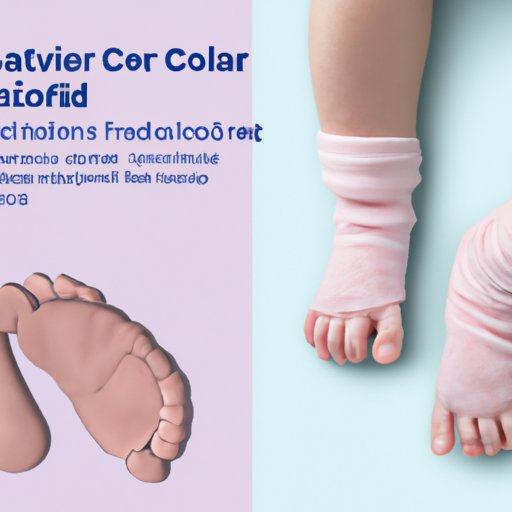Introduction
Clubfoot, also known as talipes equinovarus, is a congenital condition that affects approximately 1 out of every 1000 newborn babies. It is a condition that causes the feet to turn inward and downward. Clubfoot can be mild or severe, and can affect one or both feet. In this article, we will explore what clubfoot is, its symptoms, causes, treatment options, and provide information and support for parents and adults with clubfoot.
Clubfoot: Symptoms, Causes, and Treatment Options
Clubfoot is a congenital condition, meaning it is present at birth. The symptoms of clubfoot include:
- Feet turned inward and downward
- Inability to move the foot or ankle
- Shortened or twisted Achilles tendon
- Abnormal creases on the foot
- Small or underdeveloped calf muscles
The exact cause of clubfoot is unknown, but research suggests that it occurs due to a combination of genetic and environmental factors. Clubfoot is more common in babies born with a family history of the condition or born with certain conditions such as spina bifida.
There are different treatment options available for children and adults with clubfoot. These include:
- Serial casting: gentle stretching and casting of the feet to gradually correct the position over time.
- Surgery: if non-surgical treatments are unsuccessful, surgery may be recommended to correct the position of the feet.
- Bracing: after successful correction, a brace is worn to maintain the corrected position.
Understanding Clubfoot: A Guide for Parents
If your child is diagnosed with clubfoot, it can be overwhelming. It is important for parents to have a good understanding of the condition and what they can expect. Treatment for clubfoot can be a long process, but with patience and support, it is achievable.
Parents can support their child throughout the treatment process by:
- Getting educated: learn as much as possible about the condition, talk to healthcare professionals, and join support groups.
- Encouraging physical therapy: children with clubfoot may require physical therapy to strengthen their affected leg muscles.
- Providing emotional support: be patient, understanding and talk to your child about their feelings.
Support groups and resources can provide parents with further information and emotional support.
Living with Clubfoot: Stories of Resilience and Hope
Living with clubfoot can be challenging, but there are individuals who have faced this challenge and thrived. Real-life stories of individuals living with clubfoot can provide inspiration and hope for those facing the condition.
One such individual is Para-swimmer Kanchanmala Pande. Despite being blind and living with clubfoot, Kanchanmala has broken records and won medals in the pool. Her story is an example of resilience and determination.
Clubfoot in Infants: Steps to Early Detection and Treatment
Early detection and intervention are crucial for treating clubfoot. Infants with clubfoot can be effectively treated if the condition is diagnosed and treated early.
Treatment options for infants with clubfoot include:
- Ponseti method: a non-surgical approach that involves manipulation and casting to correct the position of the feet.
- Surgery: surgery may be required if non-surgical treatments are unsuccessful.
It is important to find a pediatric orthopedic doctor with experience in treating clubfoot. Early detection and treatment of clubfoot can lead to quicker and more successful outcomes.
The History and Evolution of Clubfoot Treatment
The treatment of clubfoot has come a long way over the years. In the past, treatments were barbaric and painful. Today, treatments are designed to be gentler and more effective.
Research into new treatments and technologies continues. One such breakthrough is the use of 3D printing technology to create customized braces for children with clubfoot. This technology has the potential to revolutionize the care of children with clubfoot.
Myths and Facts About Clubfoot: Separating Truth from Fiction
There are many myths surrounding clubfoot. It is important to separate fact from fiction to provide accurate information about the condition.
Some common myths include:
- Clubfoot is caused by the position of the baby in the womb: false; the exact cause of clubfoot is unknown.
- Clubfoot can be cured by massage or exercise: false; surgery or casting is often required to correct the position of the feet.
- Clubfoot only affects boys: false; clubfoot affects both genders equally.
Education and knowledge can help dispel myths and provide accurate information about clubfoot.
Conclusion
Clubfoot is a congenital condition that affects many individuals around the world. It can be challenging, but with the right support, education, and treatment, individuals with clubfoot can lead fulfilling lives. Early detection and intervention are crucial for successful treatment. Dispelling myths and providing accurate information can help raise awareness about clubfoot. We hope this article has provided the necessary information and resources for those affected by clubfoot.
